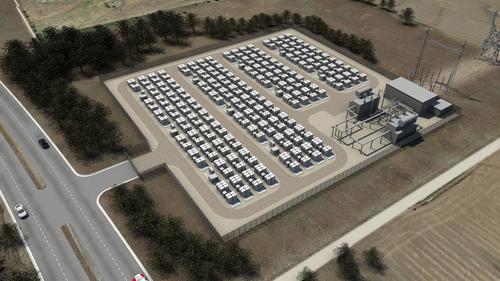Renewable Energy's Secret Weapon
December 29, 2015

As the world moves toward a grand vision of renewable energy, an underappreciated reality is dawning: You can't do it without storage.
The reason is deceptively simple: Wind turbines can't produce power when the wind doesn't blow; solar cells can't do it when the sun doesn't shine. Without some form of backup, those intermittent renewable sources can't play in big numbers on the grid, unless the world is willing to accept instability and blackouts.
That's where batteries -- farm loads of them -- could play a role. With coal and nuclear plants rapidly falling out of favor, energy storage is becoming more important, and batteries are increasingly being viewed as the most logical solution. "If you flash forward into the future, we are all going to need an inexpensive way to store lots of energy," said Jeff Chamberlain, executive director for the Joint Center for Energy Storage Research.

Racking Up Energy
Even among the world's most knowledgeable energy engineers, no one knows for sure when storage will become critical. Virtually all agree that today, with wind and solar accounting for only about 6% of the US's power, the time hasn't arrived yet. But as the number rises -- to say, 20% or 30% of the overall power produced -- the need will grow. "The curves seem to cross at about 20%," Chamberlain said. "We know this because Hawaii has exceeded that limit and it is wreaking havoc on their grid."
Battery farms are seen as a "balancing resource" for the grid, which is why they're starting to pop up around the world. NEC Energy Solutions , for example, recently sold more than 60 MW of its GSS battery storage systems in the central US, had a hand in developing a 2.4-MW grid energy storage site in Orange County, Calif., and installed an 11-MW system to support a wind farm on the island of Maui. Similarly, Saft delivered its Max+ 20M Intensium battery storage systems to an electrical cooperative in Kotzebue, Alaska, and is providing another system to store electricity at King Saud University in Saudi Arabia. It also has teamed with the Kauai Island Park Cooperative in Hawaii to supply lithium-ion batteries into a 12-MW solar energy park.
One common embodiment of such energy storage systems is the so-called "containerized" solution -- that is, a trailer full of batteries that can be installed in an urban parking lot or on a rural mountainside. NEC's system, for example, uses modular, battery-based storage racks in containers measuring as long as 53 ft and weighing up to 140,000 lb. Known as the GBS line, they can store up to 4 MWh of energy and offer up to 4 MW of power. Similarly, Saft's Intensium Max line can offer as much as 1 MW with continuous discharge power of 500 KW in a unit weighing 16.5 tons.
Material scientists are also developing alternative chemistries for the grid. Ambri Inc., for example, uses pizza-box-sized cells made from three chemical layers -- a liquid salt electrolyte sandwiched between a high-density liquid metal and a low-density liquid metal. Ambri's battery, which operates at 400C, can store up to 1.2 MWh. Others are also looking ahead to new technologies: Ecoult's UltraBattery, for example, employs an ultracapacitor inside a lead-acid battery chemistry. Also, NEC has entered into an agreement with Eos Energy Storage LLC to produce a zinc hybrid cathode battery.
"In stationary power, there are a number of alternative chemistries that have seen some adoption," said Lux Research energy analyst Dean Frankel. "But in the past year or so, the majority of systems that have been proposed and installed in the US have been lithium-ion."
Still, the possibilities are compelling for storage systems of all types. A 2015 forecast from Lux Research predicted that stationary energy storage would rise from about a $1 billion market today to $6 billion by 2020. "We don't believe there is just one solution to every storage application," said Roger Lin of NEC Energy Solutions.
About the Author(s)
You May Also Like



